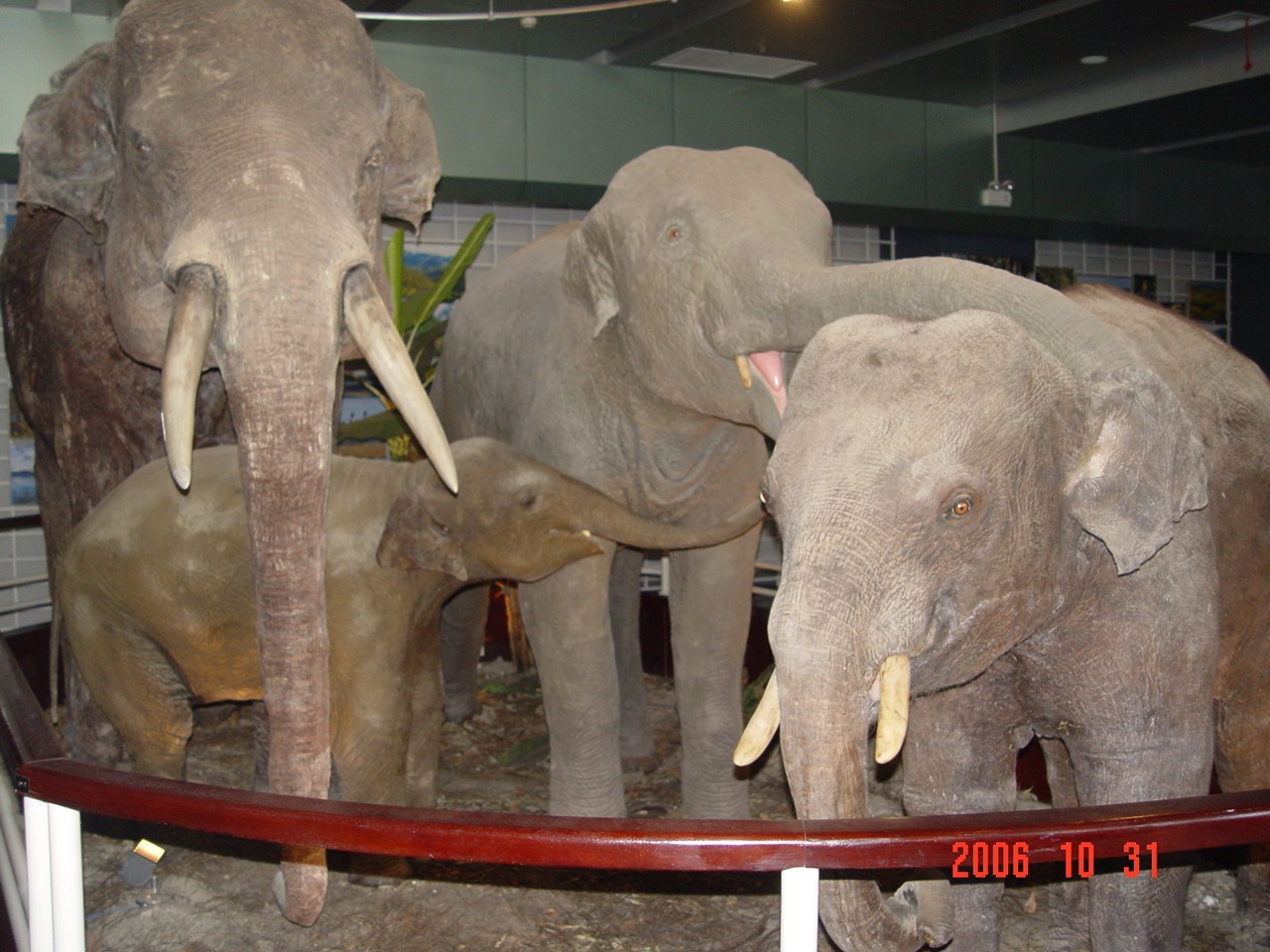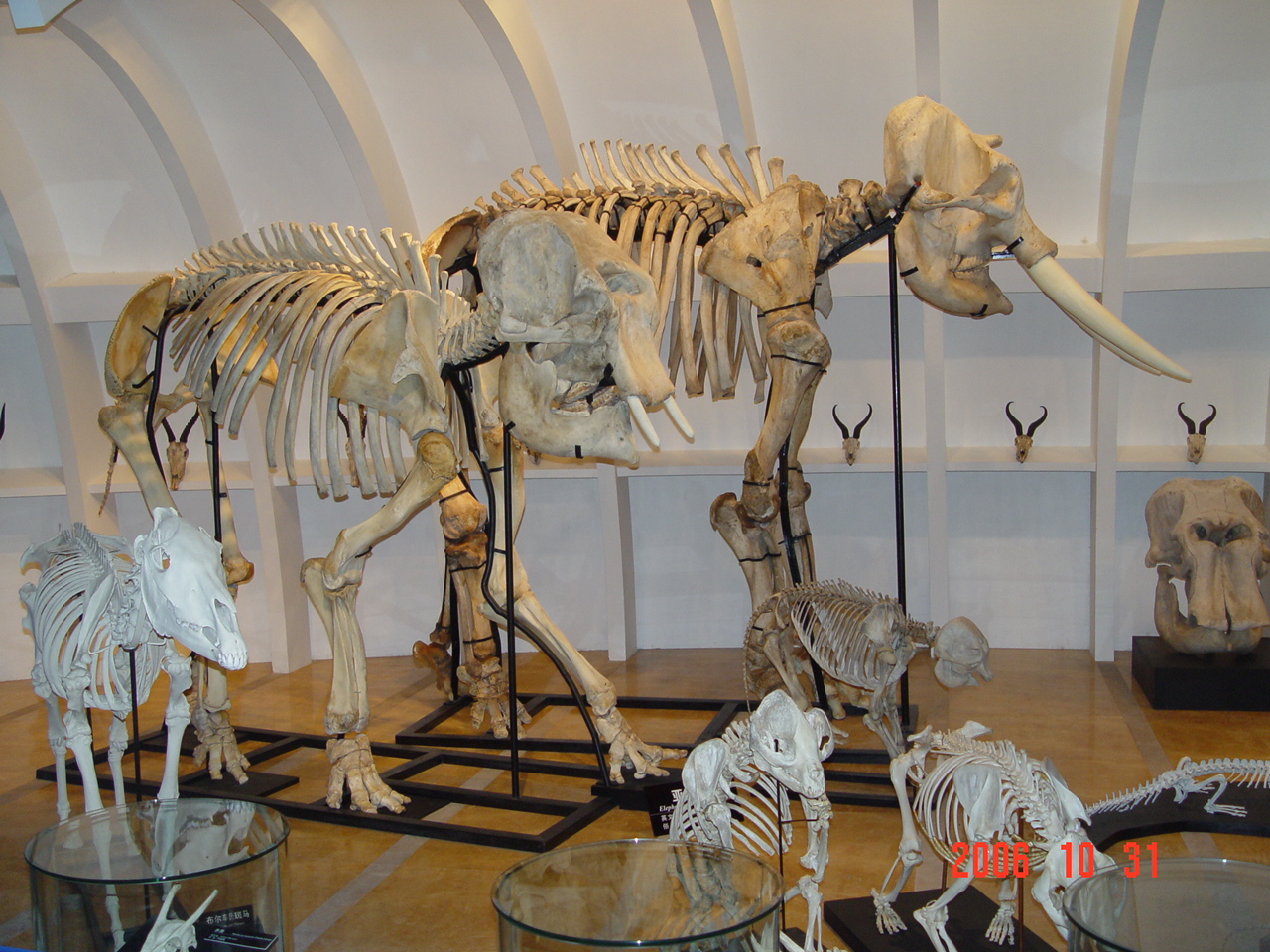
Kunming Zoology Museum, 32 Jiaochang East Road (Situated in the north of Kunming between the first and second ringroads, approximately 600 metres directly west of the Carrefore supermarket at the intersection of Longquan Road and Baiyun Road. Bus routes 4 and 92 (route 4 terminates just around the corner) run close to the museum, alternatively take routes 9, 55, 59, 74 or 96 to the Carrefore and walk from there.), +86 871 5130101. Anybody interested in Yunnan's animals through the ages could spend a couple of hours here. The museum is adjacent to, and indeed shares a compound with, a university science campus.

The exhibits are arranged on five floors starting with dinosoars, fossils and skeletons on the ground floor and working up to a tropical rain forest replica on the uppermost floor. There are sections with preserved fish and amphibians, stuffed animals and preserved insects. The exhibits seem to concentrate on creatures that are, or were, to be found in Yunnan. Most exhibits are labelled in English and Chinese but the longer explanations and information boards are generally Chinese only. Overall it is a pleasant, clean, museum with the exhibits well presented and usually well lit. It is not really an interactive museum; there is plenty to point at and peer at but not much to do. There is a small table offering momentos for sale but otherwise no shop. Nor is there any onsite catering. ¥80 Yuan (September 2008).

The Kunming Natural History Museum of Zoology (À¥Ã÷¶¯ÎﲩÎï¹Ý) is located on the campus of Kunming Institute of Zoology, the Chinese Academy of Sciences (CAS). The museum is an important project of the CAS Knowledge Innovation Program, and a joint project of the CAS and the Yunnan Provincial Government.
A trio of dino-skeletons dominate the prehistoric exhibit on the first floor. These plant-eaters stomped around Yunnan about 200 million years ago. Though the biggest of the three is a cast, the smaller ones are genuine bones, exhumed from Yunnan's Lufeng Basin in the 1980s. Though the prehistoric exhibit is the most impressive, there are plenty of animals to be seen on all of the museum's three floors. An array of taxidermied mammals and birds lines the display cases of the second floor. Up another flight of stairs reveals a "Rainforest Adventure," which walks visitors along a path through synthetic trees, bird calls and a darkened cave. There are rigid fish and snakes entombed in formaldehyde jars.
Because of the museum's affiliation with the Chinese Academy of Sciences, it is well positioned as both a tourist attraction and a home to future zoological scholarship. Most of the visitors come with a scientific background.
[NextPage]
China's biggest zoological museum opens in Kunming
The opening ceremony for the Kunming Museum of Zoology was held at the CAS Kunming Institute of Zoology on Oct. 31 in the capital of southwest China's Yunnan Province. With nearly 10,000 animal specimens that could be put on display, the museum boasts the largest of its kind in China.
The opening ceremony for the Kunming Museum of Zoology was held at the CAS Kunming Institute of Zoology (KIZ) on Oct. 31 in the capital of southwest China's Yunnan Province. With nearly 10,000 animal specimens that could be put on display, the museum boasts the largest of its kind in China.
Thanks to its geographic location in the east Himalayas, Yunnan is one of the 10 biggest bio-diversity communities across the world and is gifted with rich wild animal resources, says CAS Vice President CHEN Zhu at the opening. As a comprehensive museum, it is of great importance to showcase the features and biodiversity of the region. In addition to combining fundamental research of biology and public welfare undertakings, he stressed, the project is a major initiative to promote scientific popularization and raise public awareness for sustainable utilization of biological resources.
With 38 million yuan (4.8 million US Dollars) and 10 million yuan (1.2 million US Dollars) from CAS and Yunnan Government respectively, the construction was initiated in the year 2000. The new museum, covering a floor space of 7,400 sq m, is made up of a specimen storehouse, a hall for exhibiting specimens of tropical and sub-tropical animals and their living environment, a cinema and a lecture auditorium.
The museum houses approximately 600,000 kinds of specimens, which is considered the largest collection of topical and sub-tropical animal specimens across the country. Some of them are priceless model specimens for new species and subspecies, while others are of rare and endangered ones, such as black snub-nosed monkey, bald eagle, green peacock, Asian elephant, and stick insect.
The goal, mission, and function of the museum are designed in accordance with those of the world-class modern museums, highlighting the interactions between scientific research and scientific popularization, according to KIZ Director ZHANG Yaping.
Scientific research at the museum will be focused in such fields as zootaxy, faunistics, systematics, conservation biology, cell molecular biology, primate biology and ecology. Its exhibition will lay stress on the morphology, feature, living environment, geological distribution of various animals and the harmonious relations between wildlife and human beings.
[NextPage]
About Kming Institute of Zoology (KIZ)
Kunming Institute of Zoology (KIZ) (Öйú¿ÆѧԺÀ¥Ã÷¶¯ÎïÑо¿Ëù) is one of the 20 biological institutes under the Chinese Academy of Sciences (CAS), is also one of China's first class zoological research institutes. The Institute has not only access to the unique and diversified animal resources of the Eastern Himalayas but also a wide variety of the species from across Southeast Asia, the southern parts of Yunnan province being part of the Indo-Burma biodiversity hotspot. KIZ focuses on life science research, with research groups including systematic zoology, conservation biology, cytology, molecular biology, genome evolution, reproductive and developmental biology, neurobiology, immunological biology on important virus disease, zoological toxicology and primate biology.
Kunming Institute of Zoology (KIZ) was established in April 1959, originally as the Insect Institute, Lac Division. In 1963, it became the Southwest Institute of Zoology, CAS and in 1970 it was renamed the Yunnan Institute of Zoology, having been placed under the jurisdiction of Yunnan Province. It was not until 1978 when it was returned to the Chinese Academy of Sciences that it was named the Kunming Institute of Zoology, CAS.
Admission Fee:¥0

You will only receive emails that you permitted upon submission and your email address will never be shared with any third parties without your express permission.
